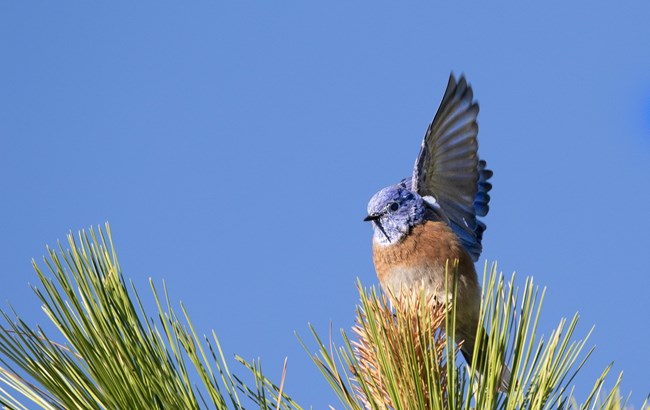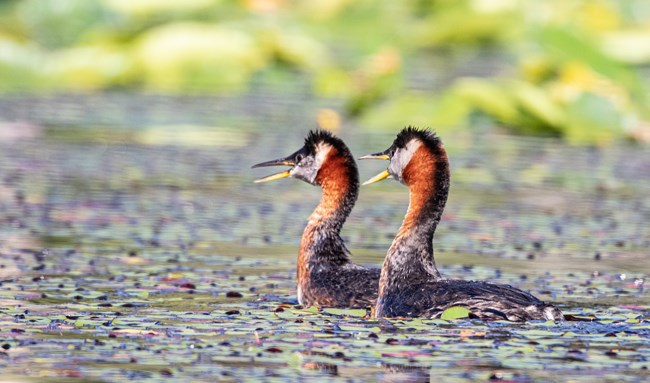Help Birds Where You Live
Birds are an integral part of our world. Being highly mobile, birds aren’t restricted to living in any one place. Whether you live in an urban area or in the middle of the wilderness, chances are you hear or see birds daily. We are drawn to birds for their intrinsic beauty—from their vibrant songs that bring music into our lives, to the feeling of wonder and awe in watching a hawk soar on thermals.
Did you know that we need birds? Birds support habitats and food crops through pollinating, eating destructive pests, and dispersing seeds. They serve as ecosystem engineers, constructing structures (like nests and tree holes) that are used by other organisms when abandoned by the birds. They also boost local economies through the multi-billion-dollar birdwatching industry.
Birds need your help! Since 1970 it is estimated that North America has lost 2.9 billion birds. Simple actions you take at home can make a big difference. You can help birds with some of these best practices.

Carey Chisholm
Here are some ways to help:
Watch birds and share what you see.
With over 10,000 species of birds worldwide — many of which travel vast distances between the seasons, keeping track of bird populations is a monumental task for scientists, so they need your help! Participating in annual bird counts and community science projects can help scientists understand how bird populations are faring.
Create habitat with native plants.
Birds, especially migratory birds, need safe places to rest, build nests, and forage for food. While a well-maintained grassy lawn may seem like a nice habitat for birds, lawns don’t provide enough food or shelter to support most birds. BONUS: Native plants are adapted to thrive in your climate, so they’re easier to take care of than a grassy lawn! Get started with these Ecoregional Native Pollinator Garden Cards and help pollinators at the same time!
Make windows safer.
Millions of birds die after hitting windows each year. Make your windows safer for birds by installing screens, stickers, or other ways of breaking up window reflections.
Keep cats indoors.
Letting your furry friend outdoors may seem harmless, but cats kill more than 2.6 billion birds each year in North America. Keep kitty indoors, on a leash, or in a “catio” to help protect birds. Learn more about being a conservation-minded pet parent.
Stop or reduce your use of pesticides.
Many pesticides are toxic to birds. Birds may come in direct contact with sprayed pesticides, or they might ingest contaminated food. Additionally, insecticides decrease the insect populations that birds need to survive.

Drink shade-grown coffee.
The majority of coffee grown worldwide is sun-grown. Sun-grown coffee destroys forest canopies to provide direct sunlight to coffee plants. Shade-grown coffee protects the forest habitat for birds and other wildlife.
Reduce your use of plastics.
Plastics pollute our ecosystems. Birds and other wildlife mistake plastics for food. Do your part by avoiding single-use plastics and choose reusable, sustainable products instead.
Reduce light pollution.
Most migratory birds travel at night. Bright city lights can disorient birds causing them to collide with buildings. Find out how you can help birds by reducing light pollution.
Connected Conservation
Conservation at HomeLast updated: June 8, 2023
